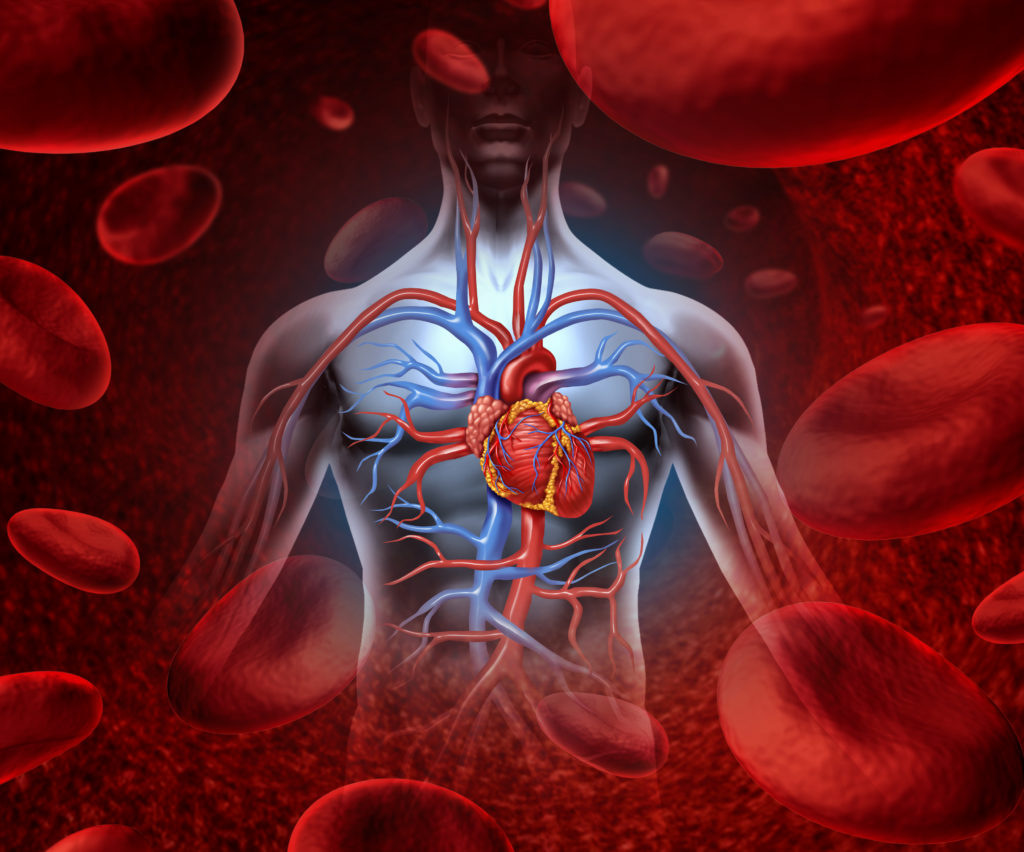
Vascular Health
The vascular system is a network of blood vessels that carry oxygen-rich blood to and from the heart, and includes arteries, veins and capillaries. Coronary Heart Disease (CHD) develops when there is a buildup of plaque in the arteries, causing narrowing and thereby restricting the blood-flow to the heart. This is known as atherosclerosis.
The conventional risk factors in identifying CHD are:
- High blood pressure
- Dyslipidemia
- High blood sugar/ diabetes
- Obesity
- Smoking
According to the American Heart Association, 50% of coronary deaths had NO previous symptoms and roughly 50% of heart attacks occurred in patients who were NOT considered “high risk”.
In light of these statistics, it has become evident that conventional risk factors for preventing CHD are defective.
The question is then, what more can be done to prevent CHD?
The first step in counteracting the onset of Coronary Heart Disease, is understanding what causes the disease and taking necessary precautions to prevent it from developing.
Understanding the Endothelium
Inside all arteries, capillaries and veins, are endothelial cells which form a single lining, called the endothelium. The endothelium plays a vital role by enabling the the blood vessels to expand and allow blood to flow more smoothly and more quickly throughout the body. It is the first line of defense against toxins, bad cholesterol and eventually plaque buildup.
Endothelial dysfunction occurs when the endothelium is unable to performs its job properly arising in an increased risk of CHD. It is important that an early diagnosis is obtained in order to stop and reverse the damage. One of the main repercussions of endothelial dysfunction is the beginning of an inflammatory process which leads to the development of atherosclerosis, and possibly cardiovascular morbidity and mortality. It is also implicated in numerous systemic disease processes such as erectile dysfunction, metabolic syndrome, cerebrovascular diseases (stroke/TIA), pre-eclampsia toxaemia, renal failure, sleep apnoea, claudication, and gangrene.
An essential tool in the diagnosis of endothelial function is a unique test called the EndoPAT ™ which we offer as a vital service in our clinic. Specifically, EndoPAT ™ is an innovative, safe and non-invasive diagnostic device for Functional Vascular Health Assessment for both large and small arteries. It is the only FDA cleared non-invasive test to evaluate the level of Endothelial Function. Endothelial Dysfunction is recognized by the medical community as the critical junction between risk factors and clinical disease. It is the earliest detectable stage of cardiovascular disease. The EndoPAT ™ adds an important dimension to cardiovascular prevention by enabling physicians to reliably measure endothelial function and identify pathological cases of endothelial dysfunction at the early stages. The EndoPAT ™ test, which can be performed in our office, takes only 15 minutes. The test is uniquely performed at the fingertip and proven to be accurate, sensitive and reproducible. Once endothelial dysfunction has been diagnosed, it can be treated and even reversed.
Treatment of Endothelial Dysfunction
Early and aggressive treatment of Coronary Heart Disease can prevent and even stop its progression.
Below are a few initiatives that are recommended to start the process:
- Optimizing nutrition – Diets including Mediterranean diets, anti-inflammatory diets, gut healing diets and high fruit and vegetable content are recommended.
- Aerobic and resistance exercise, including strength training.
- Stopping all forms of smoking and tobacco products.
- Maintaining an ideal body weight
- Reducing stress.
- Taking nutritional supplements such as omega 3 fatty acids, CoQ10, curcumin and VascuCare™.
- Taking conventional medicine, if need be.
In addition, below are some practical approaches to combating Endothelial Dysfunction:
- Cutting back on trans-fatty acids – for example, margarine, baked goods, fried food and fast food.
- Eating more sesame – Use sesame oil in your cooking as it helps to decrease blood pressure and has antioxidant properties.
- Drinking green tea – It helps reduce LDL, increase HDL, and improve energy in all cells.
- Consuming Omega-3 fatty acids – It reduces inflammation, blood pressure and helps reverse endothelial dysfunction. Omega-3 is found primarily in cold-water fatty fish e.g. salmon, mackerel, herring and tuna. It is also found in flax, flaxseed and flax oil.
- Consuming more fiber – Eating 30-50 grams of total fiber per day from whole grains, oats, barley, psyllium seeds, legumes, fresh vegetables and fruits with skin is beneficial for CHD.
- Eating garlic – Garlic is known to reduce total cholesterol.
- Taking natural supplements to reverse endothelial dysfunction – Some examples include Pomegranate, Pycnogenol, Grapeseed Extract, Olive Leaf Extract and EGCG. VascuCare™ is an exceptional product that contains all these supplements combined.